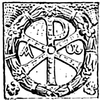- ^ Anson, Jack L.; Marchenasi, Robert F., eds. (1991) [1879]. Baird's Manual of American Fraternities (20th ed.). Indianapolis, IN: Baird's Manual Foundation, Inc. p. I-3. ISBN 978-0963715906. Baird's Manual is also available online here: The Baird's Manual Online Archive homepage.
- ^ a b Sanua, Marianne Rachel (2003), Going Greek: Jewish College Fraternities in the United States, 1895–1945, Wayne State University Press, ISBN 0-8143-2857-1
- ^ The first "ethnic"-themed national fraternities included Alpha Phi Alpha for Black Americans, formed in 1905, Rho Psi, for Asians sojourning in America, formed in 1916, and Phi Eta Mu, serving Puerto Rican students, formed in 1923.
- ^ Tucker, Susan; Willinger, Beth (2012-05-07). Newcomb College, 1886-2006: Higher Education for Women in New Orleans. LSU Press. ISBN 978-0-8071-4338-4.
- ^ Boyett, Colleen; Tarver, H. Micheal; Gleason, Mildred Diane (2020-12-07). Daily Life of Women: An Encyclopedia from Ancient Times to the Present [3 volumes]. ABC-CLIO. p. 794. ISBN 978-1-4408-4693-9.
- ^ Explained more fully in the Who We Are section of its national website, accessed 5 April 2022.
- ^ Noted among the member testimonies provided by the national website, accessed 5 April 2022.
- ^ "Home - Sigma Phi Lambda". Archived from the original on 2011-02-02. Retrieved 2010-12-05.
- ^ William Raimond Baird; Carroll Lurding (eds.). "Almanac of Fraternities and Sororities (Baird's Manual Online Archive)". Student Life and Culture Archives. University of Illinois: University of Illinois Archives. Retrieved 5 April 2022. The main archive URL is The Baird's Manual Online Archive homepage.
- ^ Noted in the Baird's Archive, "A" listings, accessed 5 April 2022.
- ^ Alpha Delta Chi national website, accessed 5 April 2022.
- ^ Alpha Lambda Omega national website, accessed 5 April 2022.
- ^ Alpha Nu Omega national website, accessed 5 April 2022.
- ^ Alpha Omega Chi national website, accessed 7 April 2022.
- ^ Former Alpha Psi Gamma national website, accessed 6 April 2022.
- ^ Appears dormant, after a 2019 hazing incident.
- ^ Delta Alpha Chi' FSU campus portal, accessed 7 April 2022.
- ^ Delta Iota Delta national website, accessed 5 April 2022.
- ^ Appears to have been formed at Grand Valley State University in Allendale, Michigan. No longer on campus, no information via Google search.
- ^ Delta Psi Epsilon national website, accessed 5 April 2022.
- ^ Elogeme Adolphi national website, accessed 5 April 2022.
- ^ Apparently no longer active at St. Xavier University, Chicago.
- ^ No known national website; several campus portals available.
- ^ Noted in the Baird's Archive, "K" listings, accessed 5 April 2022.
- ^ Lambda Chi Omega national website, accessed 5 March 2022.
- ^ Appears to have been a local Christian sorority in Illinois. No information readily available via Google search.
- ^ Not to be confused with the originally Jewish men's professional fraternity in Osteopathic Medicine.
- ^ Lambda Psi Alpha international website, accessed 10 May 2024.
- ^ Mu Alpha Mu national website, accessed 29 August 2022.
- ^ Noted in the Baird's Archive, "P" listings, accessed 5 April 2022.
- ^ Psi Delta Chi national website, accessed 5 April 2022.
- ^ Not to be confused with the Military Sorority of the same name.
- ^ Not to be confused with the national Agricultural professional sorority of that name.
- ^ Noted in the Baird's Archive, "S" listings, accessed 5 April 2022.
- ^ Sigma Alpha Omega national website, accessed 5 April 2022.
- ^ Sigma Omega Mu national website appears dormant, accessed 5 April 2022.
- ^ Sigma Phi Lambda national website, accessed 5 April 2022.
- ^ Theta Alpha national website, accessed 5 April 2022.
- ^ Theta Phi Sigma national website, accessed 5 April 2022.
- ^ Zeta Nu Delta national website, accessed 5 April 2022.
National, social Greek letter organizations for Christian men and women | ||||||||
| Fraternities |
| |||||||
| Sororities |
| |||||||
Academic fraternities originating from North America | |
| General | |
| History |
|
| Historically African-American | |
| Historically Asian/Pacific Islander-American | |
| Christian fraternities and sororities | |
| Historically Jewish | |
| Multicultural | |
| Historically Scout-affiliated | |
| LGBTQ | |
| Native American | |
| Latino and Puerto Rican | |
| Major specific | |
| Social sororities | |
| Social fraternities | |
| See also | |
